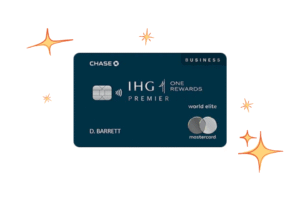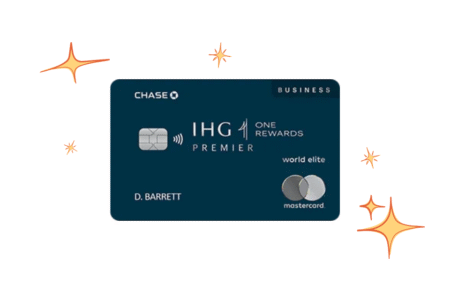Close to three-quarters of Gen Zers say they would rather have a better quality of life than extra money in the bank, according to a 2023 Intuit survey. That may be why the trend of “soft saving” is gaining popularity.
This approach to saving aims to balance your present quality of life with future security, rather than aggressively prioritizing long-term wealth building at all costs.
But is soft saving a smart financial strategy, or does it jeopardize your future financial goals? Let’s take a closer look at how soft saving works — and how to do it right.
Soft saving is a more relaxed approach to traditional savings strategies. It prioritizes enjoying life in the present while saving less aggressively for the future.
Younger savers, in particular, have embraced soft saving. But that isn’t to say they aren’t saving at all. According to a 2024 report by the TIAA Institute, Gen Z recognizes the value of saving for the future; 84% of respondents said they’re saving a portion of their income each month, and 57% said they have a budget they stick to. It may be that they simply have a different approach to wealth building than older generations.
Read more: Average savings by generation: How do boomers, Gen X, millennials, and Gen Z compare?
“We are seeing that Gen Z and younger millennials are the most vocal supporters of soft saving,” said Eleanor Victorioso, CPA and founder of The DoubleLine.
She explained that these generations grew up with recessions, student loan debt, and high housing costs, so they’re rejecting the old-school approach of sacrificing everything now to enjoy retirement later. “For Gen Z and younger millennials, their lives right now are just as important as their future financial security,” she said.
Read more: 6 Gen Z savings strategies that can work for anyone
Ultimately, soft saving is a mindset shift rather than a fixed strategy. If you want to implement soft saving, here’s how to go about it:
The first step is to ensure your basic expenses (including rent, bills, and debt payments) are met. You should also maintain a modest emergency fund of at least three months’ worth of expenses.
Automate savings contributions, and spend the rest guilt-free
A helpful practice when soft saving is to “pay yourself first” by automating small contributions to your savings and retirement accounts as soon as you get paid. Once that’s handled, the rest of your money can be used more freely. This is sometimes called reverse budgeting.
Soft savers usually set aside a portion of income for discretionary spending (such as travel, dining out, and hobbies) that support happiness and overall well-being. The idea is to balance enjoyment with responsibility, rather than seeing spending for fun as a failure.
The key to soft saving is staying flexible. There may be times in your life when you want to save more. For example, if you decide you want to own a home, you may need to temporarily focus more on traditional saving and cut back on discretionary spending to build up a down payment. The goal is balance, not sticking to rigid rules.
Soft saving isn’t the same as not saving at all. You should still be putting money aside on a consistent basis for your future. But instead of pursuing the vague goal of “saving more,” assign a purpose to your savings efforts, whether that’s going dream vacation, starting a business, or going back to school. It helps make the effort feel more worthwhile.
Read more: What is values-based budgeting, and how does it work?
Ultimately, soft saving means dedicating your extra income toward things that make life more enjoyable while still maintaining some savings buffer. It rejects “all or nothing” saving mindsets and recognizes that life is happening now.
“Soft saving is such a great concept because it is sustainable for many people,” Victorioso said. “When we feel like a process is restrictive or like punishment, we have a tendency of avoiding, rebelling, or abandoning the process altogether.” Soft saving, she said, makes managing money feel less like drudgery or financial imprisonment.
If saving less money in order to enjoy more spending today sounds like a risky move, it is.
Soft saving can relieve that pressure of feeling like you need to make major sacrifices during your prime in order to fully enjoy the last years of your life. But if you’re too lax about saving money, it could set you up for failure down the road. Here’s why.
-
You save less when it matters most: Your 20s and 30s are the most powerful decades for generating compounding returns. Even small, consistent investments can grow exponentially over time — and the earlier you start, the better. By prioritizing lifestyle spending over long-term savings, soft savers may miss out on decades of growth.
-
Limited protection against financial emergencies: Many soft savers maintain smaller emergency funds — often only a few months’ worth of expenses. That can leave you vulnerable to financial hardship and/or growing debt if you experience a major emergency like job loss or medical bills.
-
Retirement shortfalls: If you contribute less than the recommended 10%-15% of income toward retirement, you risk falling short of your future needs. Social Security alone typically replaces only about 40% of preretirement income, meaning having your own personal retirement nest egg is crucial.
Read more: How much do you really need to save for retirement?
Soft saving isn’t for everyone and can come with long-term drawbacks.
A less aggressive approach to saving could mean having less stashed away in your retirement account for your golden years or for financial emergencies, which could result in taking on more debt down the line.
Of course, the upside of soft saving is that you get to enjoy your life today without worrying about hitting traditional savings milestones. It’s certainly a more passive approach to saving, but it could lead to more consistent saving over time if a stricter method makes you want to give up.
If you’re considering the soft saving route, it’s important to consider how it could impact your short- and long-term goals.
Read the full article here












